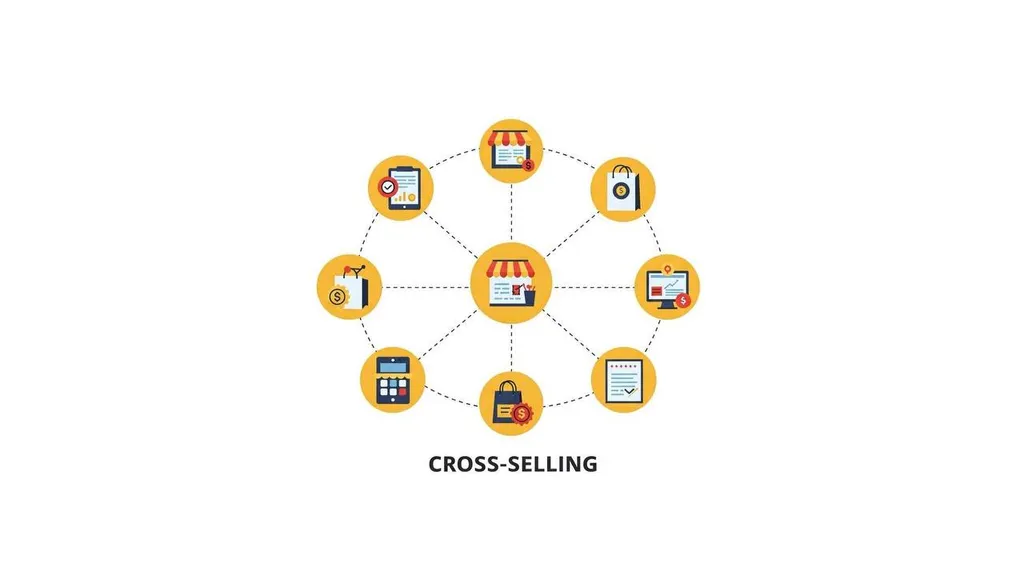Cross-Selling & Upselling opportunities
StrategySasha • February 22, 2025
In the competitive world of business, finding ways to increase sales without significantly raising marketing costs is crucial. Two effective strategies that companies often use are cross-selling and upselling. These techniques not only help boost revenue but also enhance customer satisfaction by offering them products or services that meet their needs better. This article will explore what cross-selling and upselling are, why they matter, and how businesses can implement these strategies effectively to maximize their benefits. Start enhancing your sales strategy today by learning with TeyKey on cross-selling and upselling techniques.
Understanding Cross-Selling and Upselling
Cross-selling is the practice of suggesting related or complementary products to a customer who is already buying something. For instance, if a customer buys a smartphone, offering them a screen protector or phone case would be cross-selling. The goal is to provide value by suggesting items that enhance or complement the customer's initial purchase. Amazon is a master at cross-selling. When you purchase a book, Amazon suggests related titles and complementary products, increasing the likelihood of additional sales. For more details on effective cross-selling, check out our article Mastering Cross-Selling Techniques.
Upselling, on the other hand, involves encouraging customers to buy a more expensive or upgraded version of the product they are considering. For example, if a customer is looking at a basic laptop model, upselling would involve showing them a model with more features or higher specifications, explaining the added benefits they would receive. Apple's retail stores excel at upselling by showcasing premium versions of their products and demonstrating their added features and benefits. Read more about upselling strategies in our guide Upselling for Increased Revenue.
Why Cross-Selling and Upselling Matter
Both cross-selling and upselling are important because they can increase the average transaction value, leading to higher overall sales. Additionally, they help improve customer satisfaction and loyalty by ensuring customers get the products or services that best meet their needs. When done correctly, these strategies can also enhance the customer experience by making it more convenient for customers to find everything they need in one place.Implementing Cross-Selling and Upselling Strategies
1. Know Your Customers
Understanding the needs and preferences of your customers is vital for successful cross-selling and upselling. By analyzing customer data and purchasing behavior, businesses can identify which products are often bought together and tailor their recommendations accordingly. This personalized approach makes customers feel understood and valued. For example, Netflix uses data analytics to recommend shows and movies that align with users' viewing habits, effectively upselling their subscription plans with personalized content.
2. Train Your Sales Team
Employees should be well-trained in how to effectively suggest additional products or upgrades. This involves understanding the benefits of each product and being able to communicate these benefits clearly to the customer. Training should focus on how to make recommendations feel natural and helpful rather than pushy or aggressive. For instance, Starbucks trains its baristas to suggestively sell food items that pair well with customers' coffee orders, boosting sales.
3. Use Technology
Many businesses use technology to support their cross-selling and upselling strategies. E-commerce platforms, for example, can automatically suggest additional products based on what the customer is viewing or has purchased in the past. Similarly, point-of-sale systems in retail stores can prompt sales associates with suggestions for complementary products. Shopify enables online stores to implement effective cross-selling and upselling features, such as "frequently bought together" suggestions.
4. Create Bundles and Packages
Offering bundled deals or packages can be an effective way to encourage cross-selling. By combining related products at a discounted price, customers feel they are getting more value for their money, which can increase their likelihood of purchasing the bundle. McDonald's popular meal deals bundle items at a reduced price, effectively cross-selling and increasing transaction value.
5. Follow Up with Customers
After a sale, following up with customers can provide additional opportunities for cross-selling and upselling. For example, sending an email with recommendations for accessories or enhancements related to their recent purchase can lead to additional sales and strengthen the customer relationship. Adobe follows up on software purchases with offers for additional services and training, enhancing the user experience and sales.
Challenges and Considerations
While cross-selling and upselling can be very effective, they need to be approached carefully to avoid overwhelming or annoying customers. It’s important not to overdo it with too many suggestions, which can come across as aggressive or insincere. Additionally, recommendations should always be relevant and genuinely beneficial to the customer to maintain trust and credibility.
Cross-selling and upselling are powerful tools that can significantly boost sales and improve customer satisfaction when implemented thoughtfully. To implement these strategies effectively, businesses should focus on understanding their customers' needs, training their sales teams, utilizing technology, and highlighting the benefits of additional products or upgrades. Creating bundles, packages, and personalized recommendations can also help in making these strategies more appealing. With careful planning and execution, these strategies can lead to increased revenue, stronger customer relationships, and a more successful business overall. Begin transforming your sales approach today by starting working with TeyKey on cross-selling and upselling. With careful planning and execution, these strategies can lead to increased revenue, stronger customer relationships, and a more successful business overall.